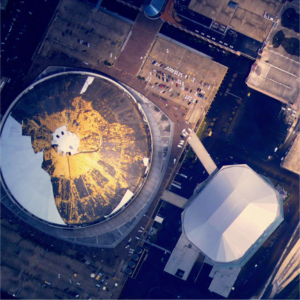News
Hurricanes, typhoons and cyclones
What’s the difference between a hurricane and a typhoon? What is a cyclone? How about a tropical storm? Well, there are really just two things you need to know.
- Tropical depressions, tropical storms, hurricanes, typhoons, and cyclones all refer to the same weather phenomenon: cyclonic (rotating) oceanic storms that develop in the tropics.
- Differences in naming are related only to (1) how strong the storm is and (2) where in the world it happens to be located.
The terms hurricane, typhoon, and cyclone all mean the same thing and depend only on the storm’s location. Usage varies, but in general terms:
- Hurricanes occur in the Western Atlantic and Eastern Pacific
- Typhoons occur in the Western Pacific, Philippine Sea, and South China Sea
- Cyclones occur in the South Pacific and Indian Ocean
Confusingly, though, the terminology regarding wind speed differs from one meteorological agency to another. For example, the National Hurricane Center (NHC) division of the National Weather Service (NWS, itself a division of NOAA), labels a storm as a hurricane when one-minute sustained winds exceed 64 knots (73.6 mph or 118.5 km/h), while the Japan Meteorological Agency draws the line between a tropical storm and typhoon at the same wind speed, but measured over a duration of 10 minutes. So even though the storms are identical, classifications may be somewhat incongruent from one organization to another.
In North America, Atlantic storms are classified on the Saffir-Simpson wind scale, which is based on a one-minute wind speed measured 33 feet (10 m) above sea level:
Category | Sustained 1-minute wind speed |
Tropical depression* | Less than 38 mph (62 km/h) |
Tropical storm* | 39-73 mph (63-118 km/h) |
1 | 74-95 mph (119-153 km/h) |
2 | 96-110 mph (154-177 km/h) |
3 | 111-129 mph (178-208 km/h) |
4 | 130-156 mph (209-251 km/h) |
5 | More than 157 mph (252 km/h) |
*Strictly speaking, the Saffir-Simpson scale does not classify storms weaker than hurricanes

Even though all of these weather systems are caused by the same oceanic conditions, there is one major difference. Because of the Coriolis effect, storms in the Northern Hemisphere rotate counterclockwise, while those that develop south of the Equator rotate clockwise.
Rotating tropical storms, no matter their location or label, have another thing in common. They can be devastating to populated areas on the islands or coastal regions that lie in their paths. When a powerful storm makes landfall, people seek shelter in many types of buildings. The higher the classification on the Saffir-Simpson wind scale, the more likely a tropical cyclone will cause severe damage to buildings. If those buildings haven’t been designed to survive high winds, the potential costs to property and the risks to life can be extreme. Though roof damage is the most common when it comes to building failure in tropical cyclones, damage from these storms can be as extreme as pulling buildings completely off the ground.
To protect buildings and the lives they shelter, CPP combines the unique talents of wind engineers and atmospheric scientists on both sides of the Equator. We work with design professionals to deliver wind-safe solutions that account for hurricanes, typhoons, and cyclones. Contact us today to learn how our unique approach can help make your next building project safe, comfortable, and efficient.
Originally published: July 6, 2014
